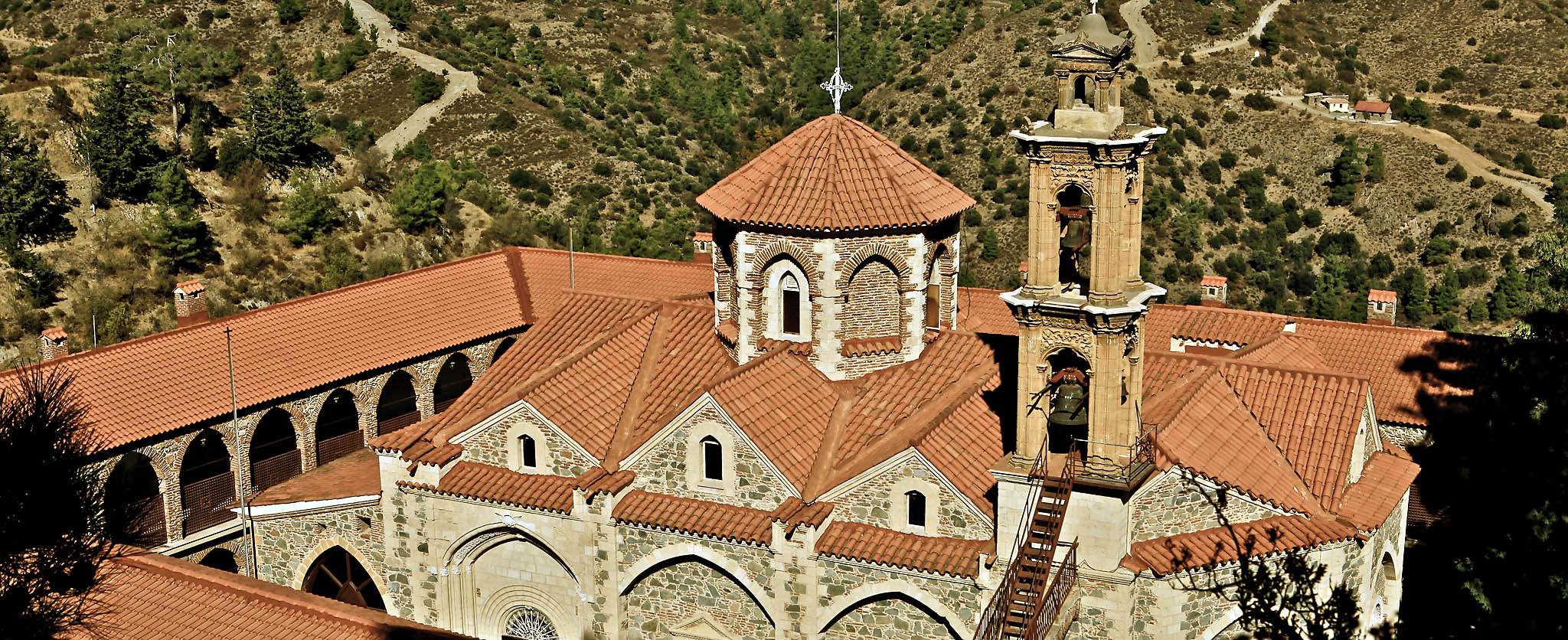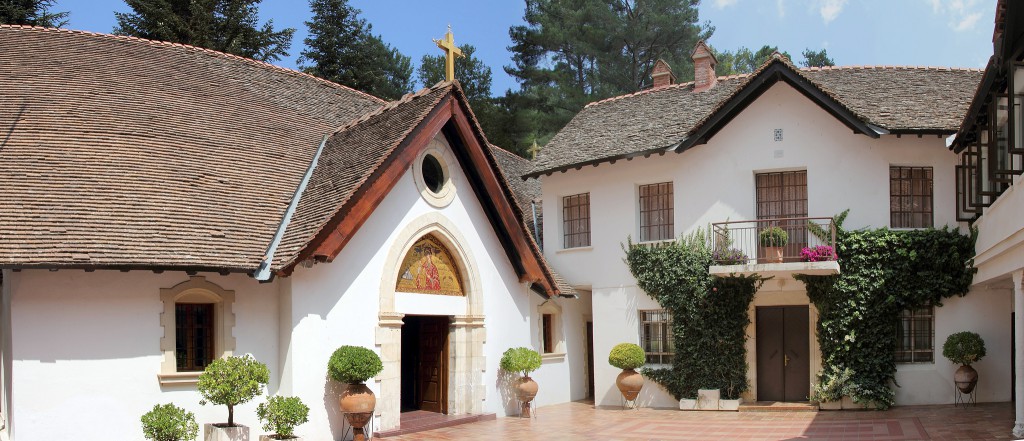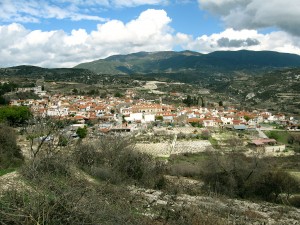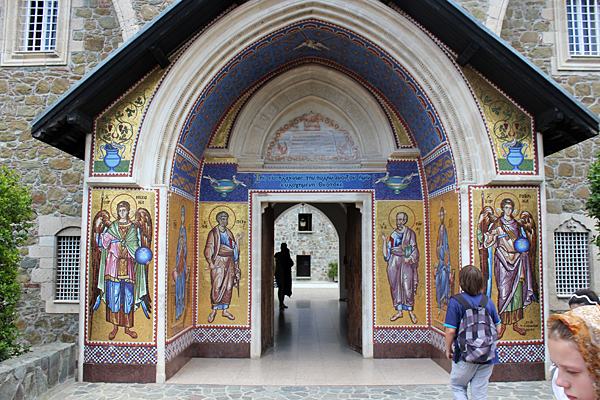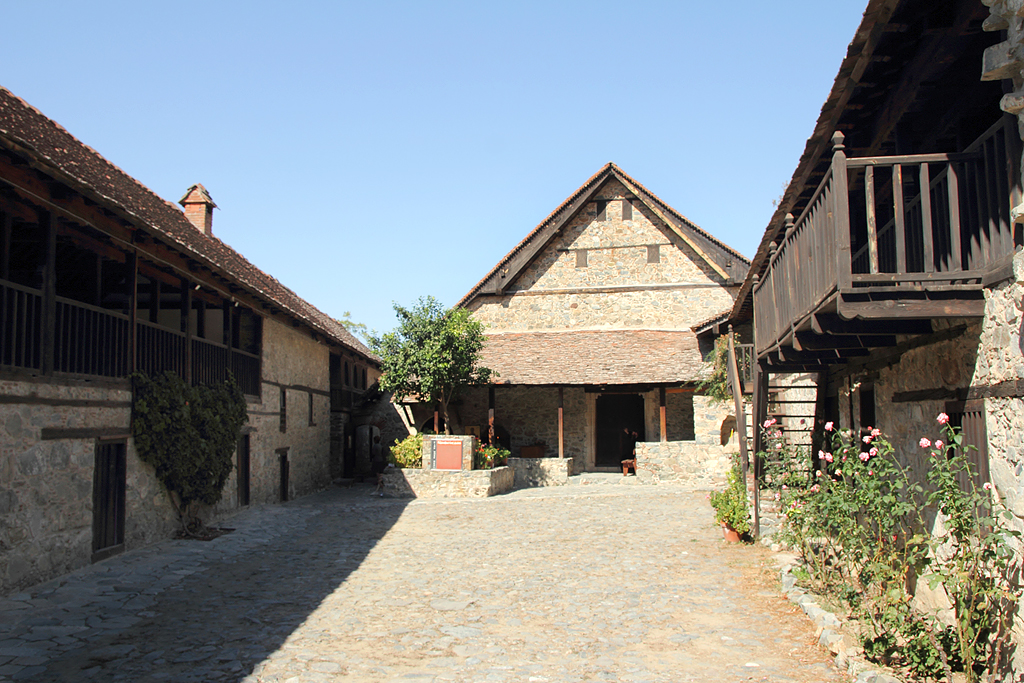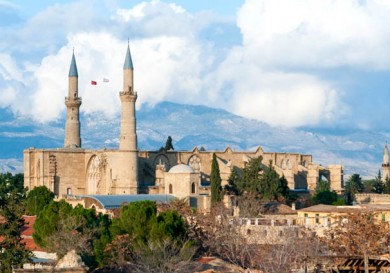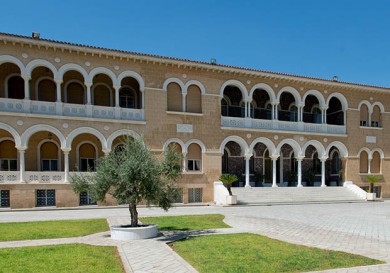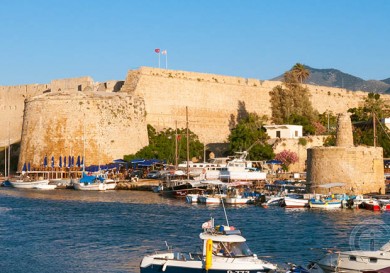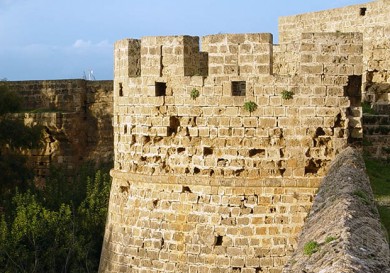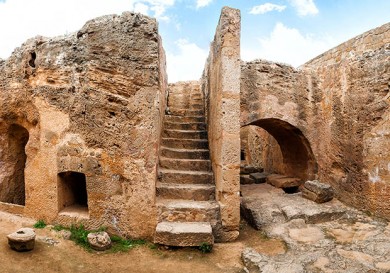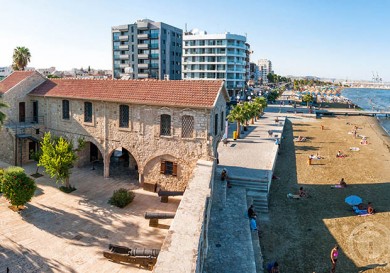Тroodos is the island’s largest mountain range. The mountain chain, located an hour and a half drive from the shore, where almost all the interesting sights of Cyprus are located – ancient monasteries and churches, mountain inns and wineries, natural monuments and wildlife sanctuaries to name a few, stretch for more than eighty kilometers.
The Trooditissa Monastery
The Holy Monastery Trooditissa, whose name means ‘living in the Greek mountains’ in Greek is located in the wonderful foothills of Troodos, at a height of about 1,400 metres above sea level and seven kilometers away from the village of Platres. There is a monastery, which carefully preserves one of the most famous icons behind its stone walls.
The miraculous image of the Holy Mother was obtained in 990. Monks link the beginning of the history of the monastery with this period, but the 12th century is considered to be when it was established and the church built on the site, although until 1570 there is no information of the place. It is also known that the main church, called the Trooditissa, Mother of God, hasn’t changed much since 1731, while most of the icons are dated to the 16th, 17th and 18th centuries.
Omodos Village
Оmodos is оne of the most famous and cosy villages in Cyprus. The village is located about 40 kilometers away from Limassol. There were two settlements, Pano and Kato Koupetra, as far back as at the end of the 12th century. It was on this site that Omodos village appeared, near to the Monastery of the Honoured Cross. The start of life of the village is connected with the end of the Byzantine era or the start of the Francs.
The Monastery of the Honoured Cross, located in the centre of the village, is famous throughout the Orthodox world, and carefully preserves relics – a particle of Life-Giving Lord’s Cross, a piece of Christ’s bandage, or ropes with which Christ was bound, and hallows of 26 saints.
The iconostasis in the church of the monastery was created by Cypriot craftsmen in a style customary for Russian parishioners, while four icons were brought from Russia.
Thanks to the efforts of local inhabitant Socrat Socratus, an unusual museum of village life was created, where you can become acquainted with the traditional Cypriot village style of life. The owner of the museum carefully preserves things that belonged to generations of ancestors, while the building where the museum is located already dates back five centuries.
There is a small museum of wine-making less than 50 metres away from Socrate’s house, where you can learn about the history of wine production in Cyprus and see an ancient wine press. One of Omodos’ most famous wineries, whose wines receive the most prestigious awards not only in Cyprus, but also in Europe, is located next to the museum.
Churches of Kakopetria
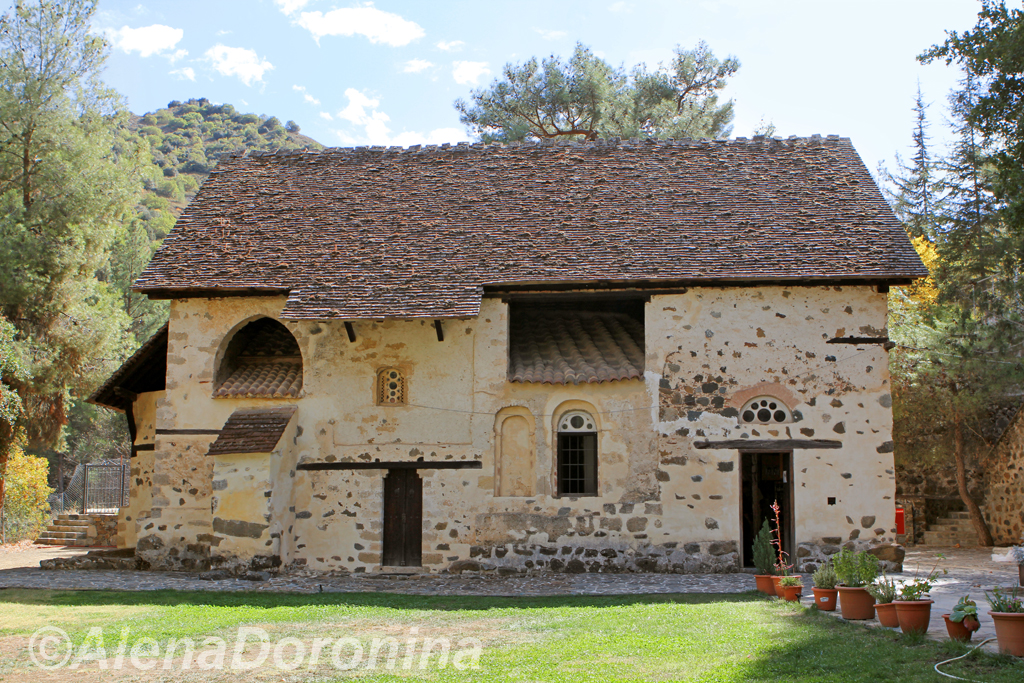 In the vicinity of the Kakopetria village there are two churches wonderfully decorated with frescos, which are under the UNESCO umbrella.
In the vicinity of the Kakopetria village there are two churches wonderfully decorated with frescos, which are under the UNESCO umbrella.
The first of them is a Byzantine church with the unusual name of The Church of Saint Nicolas ‘of the roof’ (Agios Nicolaos Tis Stegis). It is assumed that the preserved church is only part of a monastery complex, erected in the 11th century, from which only part of buildings remain.
Several layers of murals are preserved inside the church, some of which date back to the period of the 12-14th centuries. A two-storey building at the south of the church is preserved, where it is assumed the last monks of the Monastery lived. At the beginning of the 18th century the monastery was completely deserted.
The second church is located one kilometer away from Kakopetria in the neighbouring small village of Galata. This is the Church of the Mother of God Podythou (Panagia tis Podythou), which UNESCO also acknowledged as one of the international cultural heritage items.
The church was built in 1502 with funding from Greek Dimitry de Korona, who held a high position in the court of King Jacob II. The frescos of the church were made in the Italian and Byzantine style and are of great value.
A Sycamore Forest
There is a sycamore forest, Platania, about 7 kilometres from Kakopetria, where local inhabitants like to go for picnics. While walking along the road, pay attention to a Mouflons signpost, which leads to a wild forest where, if you are lucky enough, you may see Mouflons – small mountain sheep, who live on the island.
The Kikkos Monastery of the Most Holy Mother of God
A wonderful Kikkos monastery, named after the homonymous icon of the Holy Mother of God, was erected in one of the most picturesque nooks of the Troodos Mountains, at a height of 1,244 metres above sea level. The legend says that the miracle working icon of the Holy Mother of God was painted by Luke the Apostle, when the Holy Mother was alive.
The icon of the Holy Mother ‘Kikkos Eleusa’ (Tender) is covered with a velvet cover, which retains the faces of the Blessed Virgin Mary and Christ, Whom the Holy Mother holds in her right hand, in sacrament. To the right of the icon you can see a cast of a withered hand, which is a symbol and reminder of a person who tried to tear the cover away from the icon.
Monastery manuscripts hold tales of wonder, which followed prayers to the Mother of God in front of the miracle working icon. The fact that the icon was never damaged during four merciless fires which have occurred during the long history of the Monastery, is a miracle in itself.
The Monastery of Saint John Lampadistis
In the village of Kalopanayiotis located on the bank of the Setrahos River, you may visit a monastery, which UNESCO has put on the list of international cultural heritage.
We know nothing about the time the monastery was founded, but the main church, which was dedicated to Saint Iraklidios, was built in the 11th century and it’s assumed the monastery was also founded then.
There are murals dating back to the 11th century of unique value. The icon of Saint Lampadistis and the icon of Saint Iraklidios, with the names of their donators, are considered the most important of them. The main church has its iconostasis preserved (13-14 centuries), which is considered one of the oldest iconostases that exist on the island.
We should mention the village of Lefkara, famous for its lace making and handmade silverware as well as Monasteries Маcheras and Stavrovouni as also being among the other sights of Troodos. Byzantine bridges and numerous water falls are beautiful and remarkable. The Troodos Mountains keep their real treasure – historical, architectural, natural and, of course, spiritual. If you have a chance, please, leave the shore and spend at least one day in the mountains, enjoying fresh forest air and wonderful landscapes.




